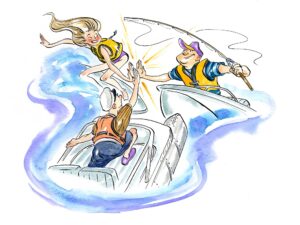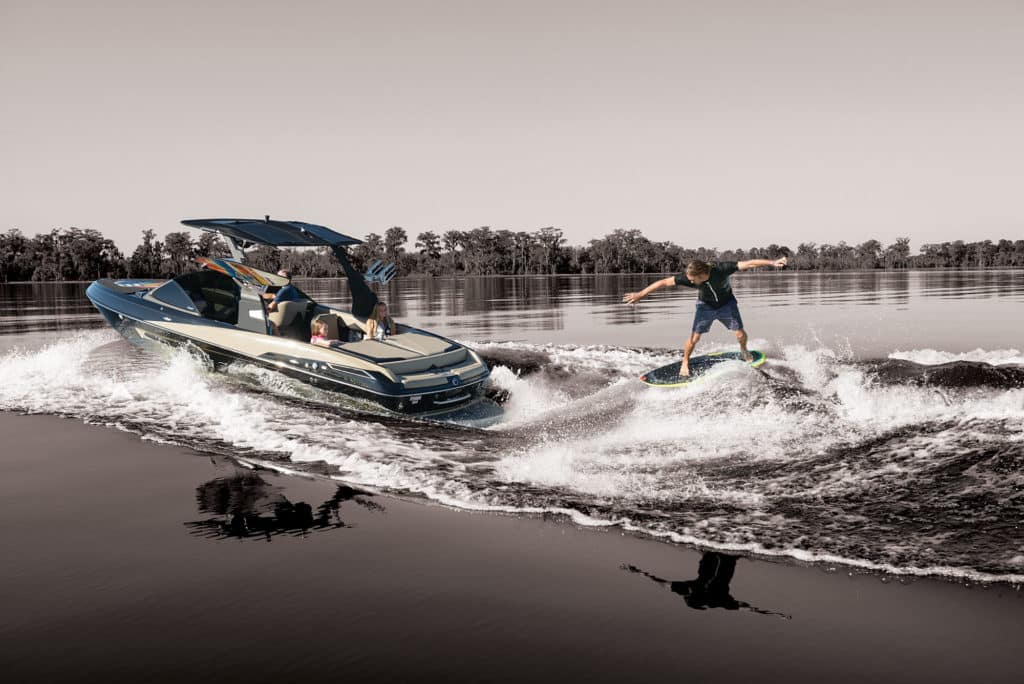
It seems like every year, more and more boat companies are offering boats that you can surf behind—runabouts, deck boats and even pontoon boats with V-drives, jet engines or Volvo Penta’s Forward Drive. For most new to the sport, the biggest hurdle is learning how to get up. That’s why we’re here to help. Here’s how to get up on a wakesurf board.
Board Selection
While there are several types of boards available for wakesurfing, start with a longer, more buoyant board that will be more stable underfoot the first time you stand up. Look to start with a board over 5 feet in length and with three fins on the bottom to provide more -stability and control.
Rope Selection
Unlike with wakeboarding and water–skiing, the rope in wakesurfing is not -used to perform the sport, but simply to get up behind the boat and drop into the pocket. When you get comfortable on the board, the ultimate goal is to let go of the rope and surf the wake hands-free. But in the beginning, you’ll -likely hold onto the rope to learn how to remain in the surfable sweet spot. Wakesurfing ropes are typically only 10 to 25 feet in length. Set up the rope on the boat’s tower or hitch point to one side so the surfer can try to stand up outside the boat’s wake and then work their way into the wave as they get more comfortable and confident.
In The Water
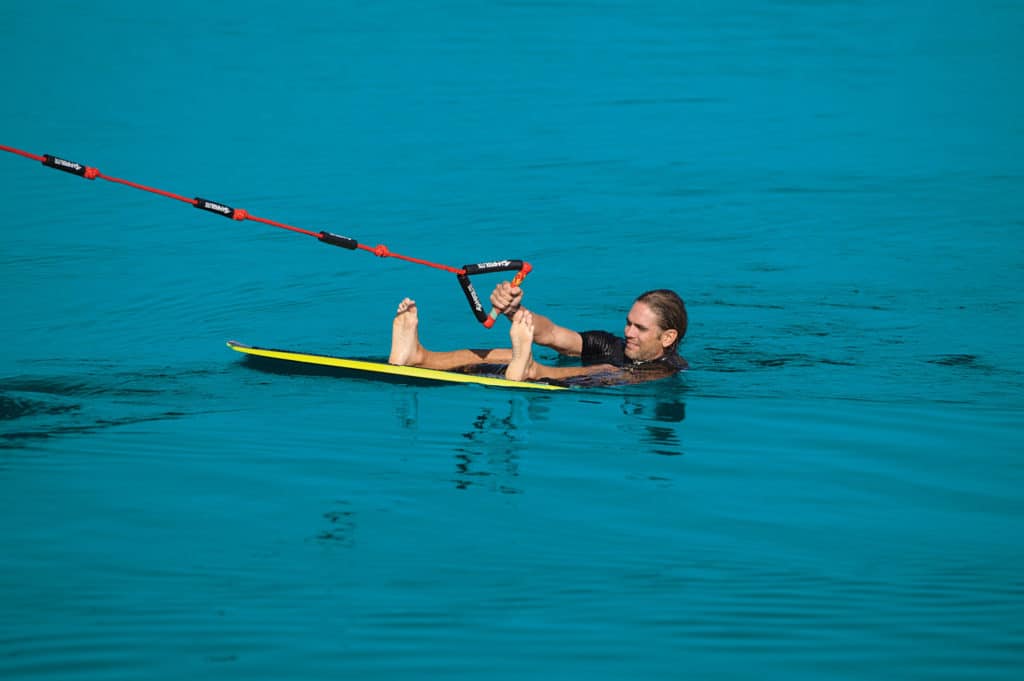
Step 1: Face the transom of the boat with the board floating in front of you, perpendicular to the boat’s centerline and with its nose point away from the wake. (For right-footed people, this will be pointing left on the left or port side of the boat; left–footed people would do the opposite.) As the board is lying flat, rest your heels on top of the board about shoulder–width apart. Hold the rope handle so that it’s centered between your legs. Your US Coast Guard-approved life jacket should help you float in position at the ready.
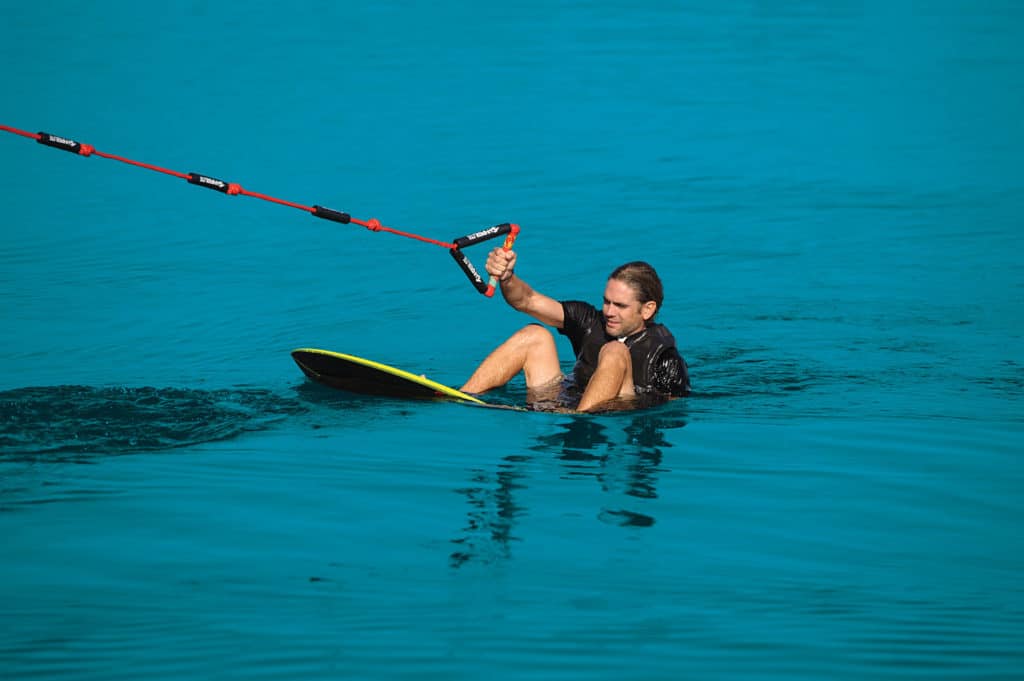
Step 2: The boat’s driver will put the boat into forward idle to make the rope come taut. Once the rope is tight and the driver starts accelerating, bend your knees and press down with your feet against the board. The board will start to flip up until your feet are flat against the board, and water pressure should hold it in place.
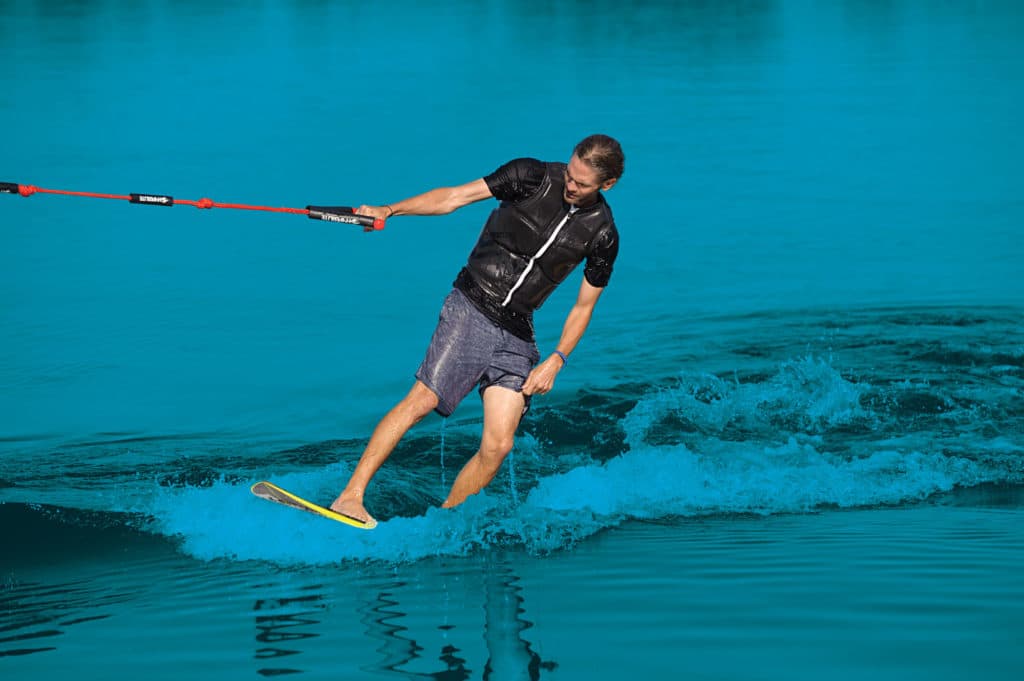
Step 3: Don’t lean back and pull against the rope as you would while getting up in water–skiing. Instead, let the boat gently pull you up. As you rotate forward, the board will pop up so that it’s positioned flat on the water underneath your feet. From there, slowly stand up and turn your body so that the nose of the board is pointing forward.
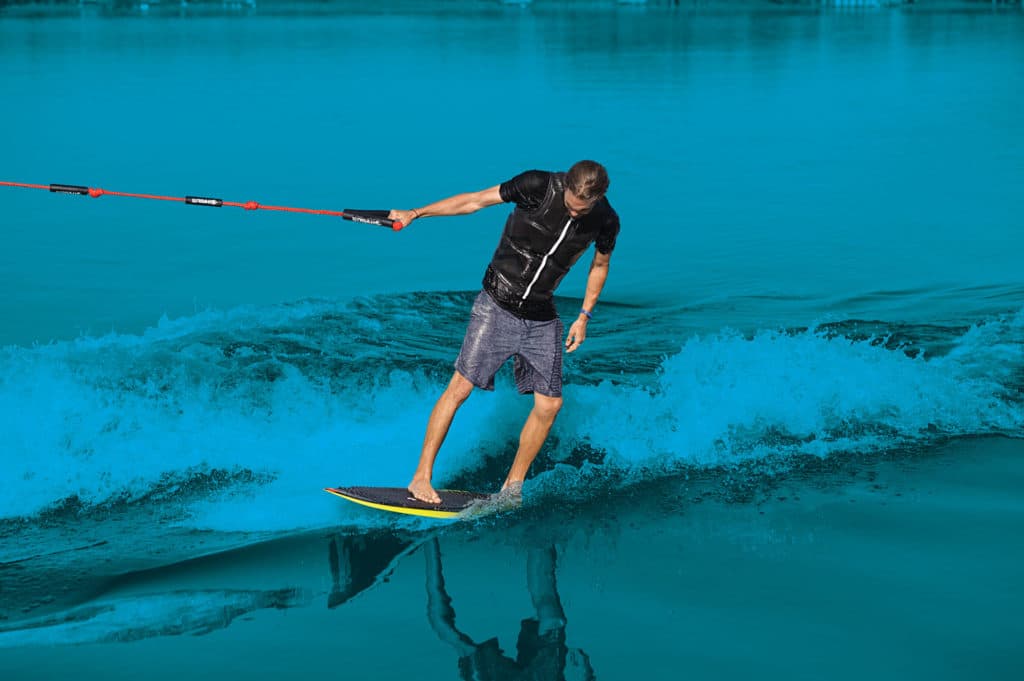
Step 4: You’re up! Hold the rope with your front arm and position yourself to work your way into the wave. Don’t pull yourself into the wave with the rope. Instead, shift your weight onto your front foot to move forward into the wave. To get into position, think of your front foot as the gas pedal and your back foot as the brake.
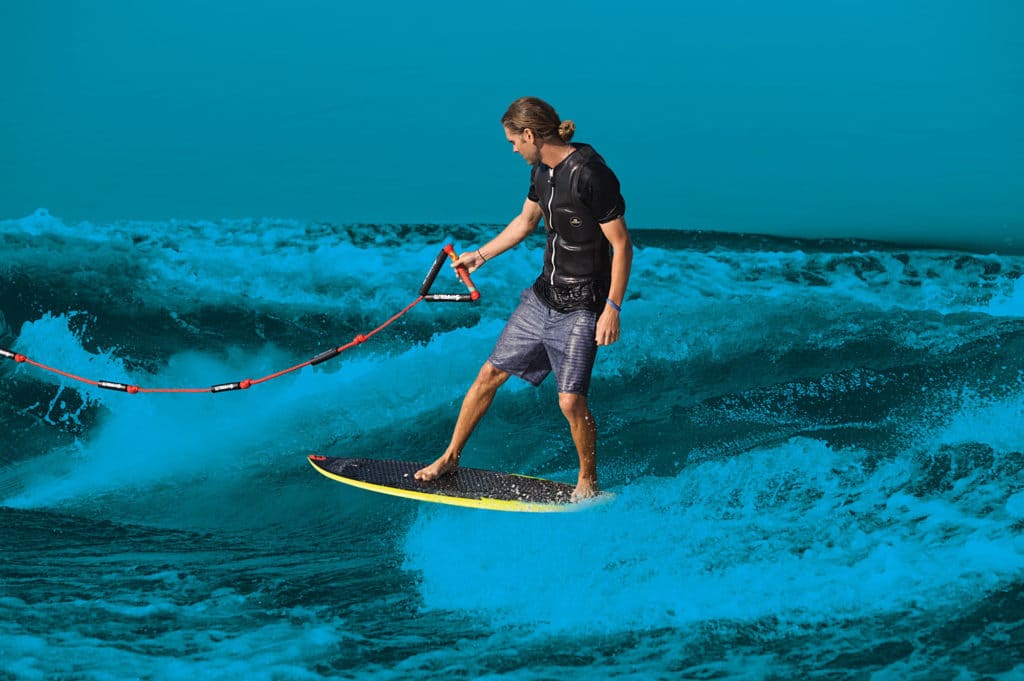
Step 5: As you move into the wave, the rope will become slack as you find the sweet spot. Drop your front arm to your side to resist using the rope to pull you. Once you can consistently ride with a slack rope, toss the handle onto the swim platform for the spotter to retrieve.




